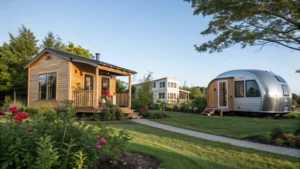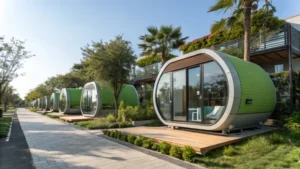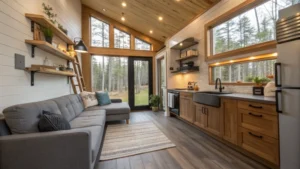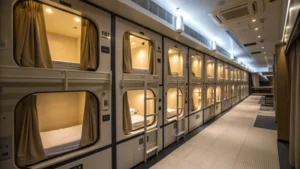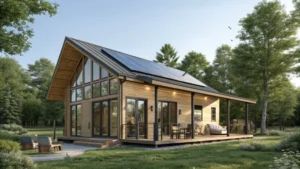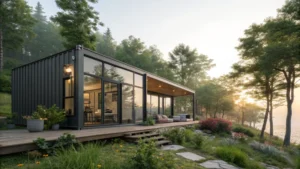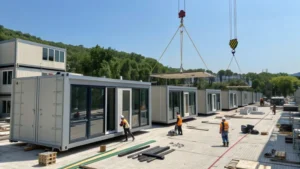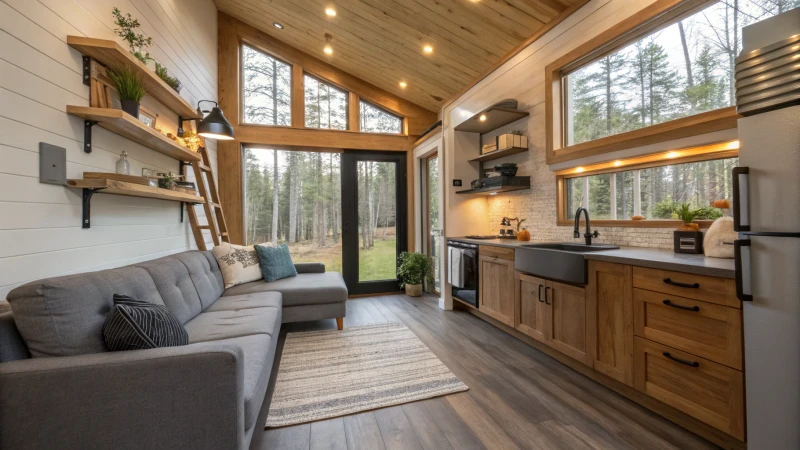
Ever thought about embracing the tiny living movement? Micro houses are all the rage for good reason.
Living in a micro house can slash your expenses, boost energy efficiency, and help you embrace minimalism, but it also means dealing with tight spaces and zoning issues. Weighing these pros and cons is key to deciding if this lifestyle suits you.
I remember when the idea of living in a micro house first caught my attention. It seemed like the ultimate way to simplify life—goodbye clutter, hello freedom! But as I delved deeper into the lifestyle, I realized it wasn't just about throwing out old junk. It's a commitment to living with less but gaining more in terms of life quality.
You might be tempted by the lower costs and eco-friendliness, just like I was. Yet, the challenge of fitting my life into such a compact space made me pause. There’s a freedom in less, but also an adjustment period where you learn to do without extra square footage and navigate zoning laws. This exploration is what we're diving into today—let's see if tiny living might be your next big adventure.
Micro houses are always cheaper than traditional homes.False
While often cheaper, location and customization can increase costs.
Zoning laws can restrict micro house placement.True
Local zoning laws may limit where micro houses can be built.
How Affordable Is Living in a Micro House?
Ever wondered if living in a micro house could be the budget-friendly lifestyle you've been dreaming of?
Micro houses significantly reduce living costs. With lower construction expenses, enhanced energy efficiency, and minimal maintenance needs, they offer a budget-friendly alternative to traditional homes. Understanding zoning laws and initial investment is crucial for this lifestyle choice.
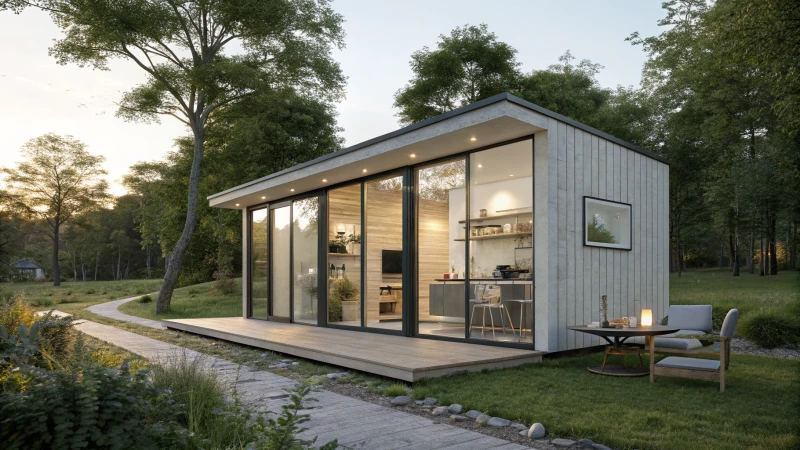
Initial Cost Savings
When I first stumbled upon the idea of micro houses, it felt like finding a hidden gem in the world of real estate. Imagine cutting down on construction costs simply because these homes are so much smaller. There's a certain thrill in knowing that you need less material and time to build your perfect little haven. Typically, the price tag on a micro house is way lighter than that of a traditional home, making it an appealing option for someone like me who’s always on the lookout for clever ways to save.
| Aspect | Micro House Cost | Traditional House Cost |
|---|---|---|
| Materials | Lower | Higher |
| Labor | Lower | Higher |
| Time to Build | Shorter | Longer |
These savings don't just stop at construction. I've seen eco-tourism operators1 and real estate developers jump on this trend for its cost-effectiveness and sustainability.
Long-term Financial Benefits
One of my favorite aspects of micro houses is their energy efficiency. Smaller spaces mean you don’t need as much power to heat or cool them. Many micro houses come equipped with eco-friendly features like solar panels and high-efficiency insulation, which can cut energy bills by up to 50%. This kind of savings adds up over time, making it a smart choice if you're keen on keeping those monthly expenses in check.
- Energy Bills: Potentially cut by up to 50%, offering significant savings over time.
- Maintenance Costs: With fewer components and a smaller footprint, micro houses often incur lower maintenance expenses.
Plus, with fewer things to maintain, the overall upkeep costs are much lower.
Minimalistic Lifestyle and Savings
Living in a micro house naturally nudges you towards a minimalist lifestyle. This shift isn't just about aesthetics; it's about practicality and savings. When space is limited, you become more conscious about what you bring into your home. This mindset leads to fewer unnecessary purchases, which ultimately saves money.
- Space Utilization: Encourages efficient use of space, reducing clutter and maximizing function.
- Simple Living: Aligns with sustainable practices and reduces overall living expenses.
I love how this lifestyle encourages efficient use of space, reducing clutter and maximizing functionality. It's a win-win for those of us who value sustainability and want to keep living expenses low while being ideal for eco-conscious buyers2.
Zoning and Regulatory Considerations
However, before diving headfirst into the micro house movement, it's crucial to understand local zoning laws. Regulations can vary widely and may affect where you can place your micro house. I learned the hard way that some areas have specific restrictions regarding size or foundation types.
- Zoning Laws: Always check local regulations to avoid legal hiccups.
- Building Codes: Compliance with safety and design standards is a must.
Reaching out to consult local authorities3 can save you from potential headaches and unexpected costs later on. This proactive approach ensures that all legal aspects are covered before purchasing or building a micro house.
Micro houses cost less to build than traditional homes.True
Micro houses use fewer materials and require less labor, reducing costs.
Zoning laws do not affect micro house placement.False
Local zoning laws can restrict where micro houses can be built.
Can Micro Houses Meet Energy Efficiency Standards?
Ever wonder if those charming little micro houses can really keep up with energy efficiency standards? Let’s dive into how these compact dwellings manage to pack a punch in sustainability.
Micro houses can meet energy efficiency standards by incorporating features such as superior insulation, solar panels, and efficient appliances. Their compact size often leads to reduced energy consumption compared to traditional homes.
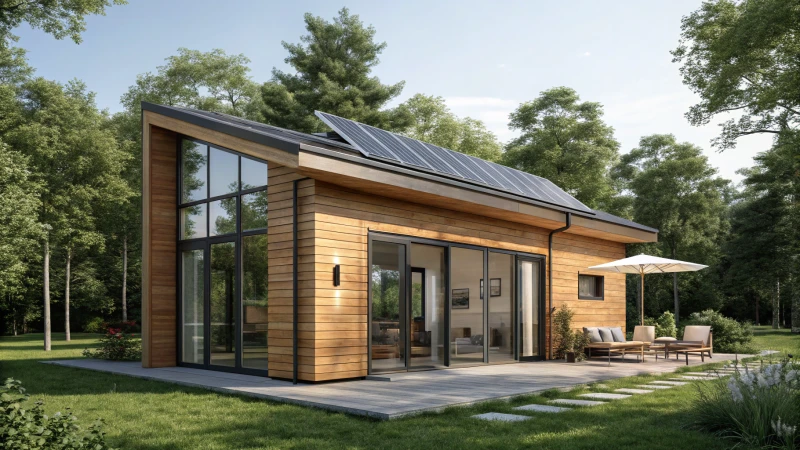
The Role of Design in Energy Efficiency
You know, I once stood in a tiny living room—more like a cozy nook—and marveled at how warm it stayed even when it was blustery outside. That's the magic of micro house design! These compact wonders are built to maximize every inch, which means less wasted space and more efficiency. Designers use top-notch insulation4 and airtight construction to ensure these homes retain heat in winter and stay cool in summer. It’s like living in a perfectly snug sweater year-round.
Technology Integration for Sustainability
Remember the first time you switched to LED bulbs and noticed the drop in your electricity bill? Well, micro houses take that concept to a whole new level. Many of them come equipped with solar panels, generating their own electricity and sometimes even contributing power back to the grid. Smart thermostats and energy-efficient appliances work together to ensure that no watt is wasted.
| Technology | Benefit |
|---|---|
| Solar Panels | Reduces reliance on fossil fuels |
| Smart Thermostats | Optimizes heating/cooling cycles |
| LED Lighting | Decreases electricity consumption |
Regulatory Compliance Challenges
Navigating the maze of local building codes can be daunting. I’ve seen builders in California, where the regulations are as strict as they come, tackle these challenges head-on. They need to ensure their micro house designs comply with standards like California's Title 245, which demands specific energy efficiency criteria.
Comparing to Traditional Housing
I remember comparing my energy bills to those of friends living in traditional homes; my micro house consistently used less energy. With smaller spaces, there’s less need for lighting, heating, and cooling. In fact, a typical micro house can use up to 50% less energy than a standard home, which makes it a stellar sustainable option6 for anyone who’s keen on reducing their carbon footprint.
In summary, through thoughtful design and technology integration, micro houses not only meet but often exceed current energy efficiency standards. They’re a fantastic option for sustainable living—compact, cozy, and kind to our planet.
Micro houses are always more energy-efficient than traditional homes.False
While often more efficient, not all micro houses surpass traditional homes in energy use.
Solar panels on micro houses can feed excess power back to the grid.True
Micro houses with solar panels can generate surplus electricity for the grid.
What Lifestyle Adjustments Are Required for Micro Living?
I remember the day I decided to embrace micro living. The thought of simplifying my life felt exhilarating, yet daunting.
Micro living requires embracing minimalism, using multi-functional furniture, regularly decluttering, and adopting clever storage solutions. Maximizing vertical space and focusing on essentials can transform small areas into functional and cozy homes.
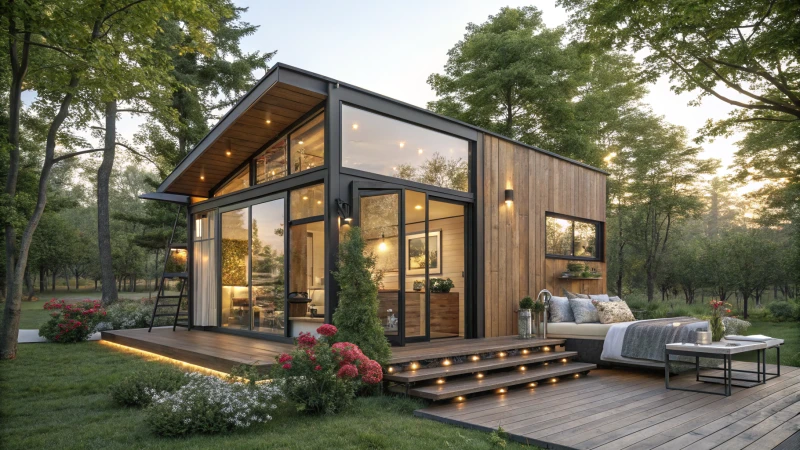
Embracing Minimalism
I'll never forget my first attempt at downsizing. It was a rainy afternoon, and I sat surrounded by piles of clothes and books, wondering how I'd accumulated so much. Embracing minimalism in micro living isn't just about reducing clutter; it's about finding joy in simplicity. I began by categorizing items into 'keep,' 'donate,' and 'discard' piles. The KonMari Method7 was a revelation, helping me focus on what truly sparked joy.
Optimizing Space
In my tiny home, every inch is precious. I invested in a sofa bed that doubles as a guest bed, and a dining table that transforms into my work desk. Custom-made furniture was key to fitting my unique layout perfectly. Here's a little trick: think of your walls and ceilings as potential storage spaces. It's amazing how much more room you can create by going vertical.
Here's a simple table of multifunctional furniture ideas:
| Furniture | Additional Use |
|---|---|
| Sofa Bed | Sleeping Area |
| Folding Table | Dining/Work Station |
| Storage Ottoman | Seating & Storage |
Efficient Storage Solutions
When I first moved in, I didn't realize how much I'd rely on vertical storage. Installing ceiling-high shelves and cabinets turned out to be a game-changer. Using a step stool to access them felt like a small price to pay for the extra space. Magnetic strips became my best friend in the kitchen, holding everything from knives to spice jars. And for those seasonal items, under-bed storage is a must.
Adjusting Daily Routines
Living small required some creativity with my daily habits. Cooking became an art of efficiency, using compact appliances and planning meals that didn't require every dish in the house. I also had to rethink laundry day since my tiny home doesn't have a built-in washer or dryer. Trips to the local laundromat are now planned like clockwork.
Navigating Social Gatherings
Entertaining was something I initially worried about, but I've learned to host with flair in my cozy space. Intimate gatherings with foldable chairs and tables keep the space flexible yet inviting. It's all about creating a warm atmosphere, so I've become quite the expert at lighting candles and selecting the perfect playlist to set the mood.
For more tips on hosting in small spaces, check out Explore Tiny Home Gatherings8. It's truly possible to make your micro living environment feel welcoming for social interactions.
Micro living requires adopting the KonMari Method.False
The KonMari Method is suggested but not required for micro living.
Vertical storage maximizes space in micro living.True
Using vertical storage solutions effectively increases usable space.
What Legal Challenges Exist for Micro House Ownership?
Imagine living in a cozy micro house, embracing simplicity and sustainability. It's a dream for many, but legal hurdles can stand in the way. Let's explore these challenges and find a path forward.
Yes, owning a micro house does come with legal hurdles, mainly involving zoning laws and building codes. These regulations vary by location, often dictating where micro houses can be built and lived in, posing challenges for prospective owners.
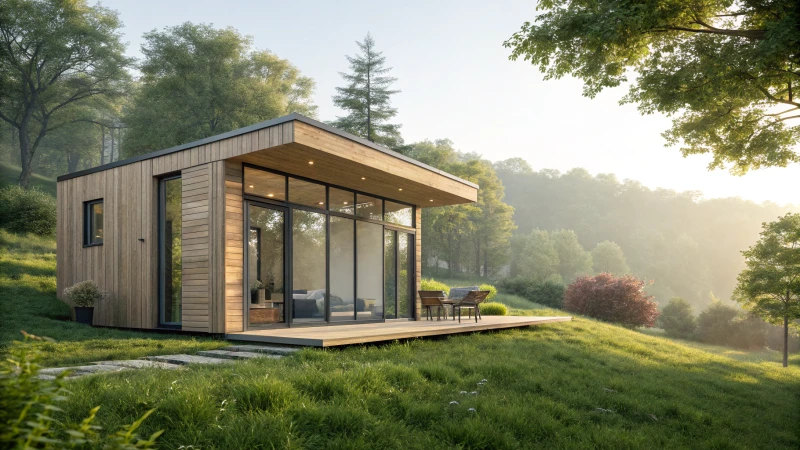
Zoning Laws and Regulations
I remember when I first looked into owning a micro house, the zoning laws felt like a maze. These laws dictate land use, and often, micro houses don't quite fit into existing categories. This can lead to restrictions in residential areas. Some cities, however, are making strides by classifying tiny houses9 as accessory dwelling units (ADUs), which can help them sidestep some of these barriers.
Building Codes and Standards
Navigating building codes was another adventure. These codes ensure safety but can be tricky for micro house designs that challenge traditional standards. For instance, there's often a minimum square footage requirement that many micro houses can't meet. Luckily, some places offer building code exceptions10 that provide the flexibility needed for these innovative homes.
| Aspect | Challenge |
|---|---|
| Zoning Laws | Restrictions based on area classification. |
| Building Codes | Minimum size and safety standard requirements. |
Homeowners Association Rules
Then there's the matter of homeowners associations (HOAs). I once thought I found the perfect spot, only to discover the HOA had strict rules about aesthetics and property values. It taught me the importance of reviewing HOA policies11 before making any commitments.
Finding a Legal Path Forward
Despite these challenges, owning a micro house is possible. Some regions are embracing "tiny house-friendly" policies, integrating them into communities with open arms. By doing thorough research and consulting with experts, I've learned it's possible to find a clear legal path forward and achieve those tiny living dreams.
Zoning laws often exclude micro houses from residential areas.True
Zoning laws typically restrict land use, excluding tiny homes in many areas.
Micro houses always meet building code requirements.False
Unique designs of micro houses often don't meet standard building codes.
Conclusion
Micro houses offer affordability, energy efficiency, and a minimalist lifestyle but face challenges like limited space and zoning regulations. Weighing these pros and cons is essential for potential owners.
-
Exploring this link can provide insights into how eco-tourism operators can capitalize on the affordability and sustainability of micro houses. ↩
-
This link explains the financial and environmental benefits of adopting a minimalistic lifestyle with micro homes. ↩
-
Understanding local zoning laws is crucial to avoid potential legal issues when living in or building a micro house. ↩
-
Discover why proper insulation is crucial for maintaining energy efficiency in micro houses, reducing both energy costs and environmental impact. ↩
-
Learn about California's stringent Title 24 standards and how they impact the design and construction of energy-efficient buildings. ↩
-
Explore the advantages of sustainable living with micro houses, focusing on reduced energy consumption and environmental footprint. ↩
-
The KonMari Method is a popular decluttering approach that encourages keeping only items that spark joy, ideal for simplifying micro living. ↩
-
Discover creative ways to entertain in small spaces, enhancing your micro living experience with practical tips and arrangement ideas. ↩
-
Explore how zoning laws impact where you can place a tiny house legally. ↩
-
Learn about exceptions in building codes that could allow more flexibility for tiny homes. ↩
-
Understand how HOAs might affect your ability to own or place a tiny house. ↩



